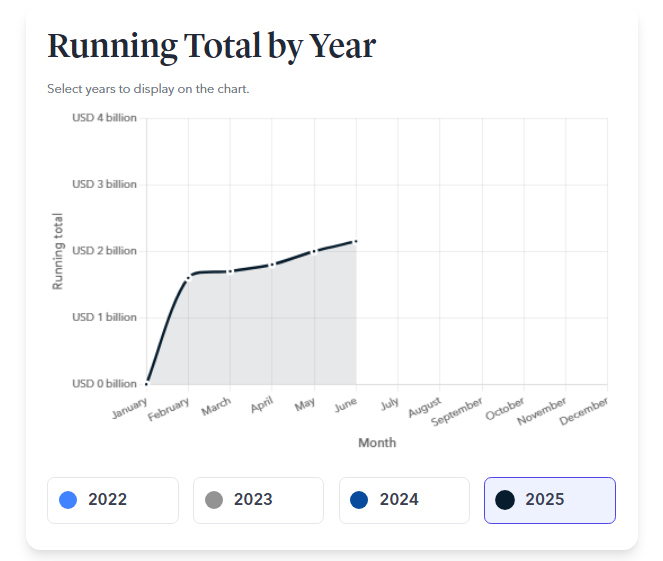Crypto Heists Hit $2B in 2025 – A New Era of Digital Bandits Shatters Market Confidence
Hackers just wrote the biggest heist script in crypto history—and Wall Street’s 'bulletproof' security theater got left holding the empty bag.
Breaking the vault
Forget bank robbers with ski masks. The new master thieves drain wallets with keystrokes, not crowbars—$2 billion vanished before exchanges could even tweet 'funds are safu.'
Security? What security?
DeFi protocols got raided like unguarded candy stores. CEXs promised fortress-level protection… until their hot wallets turned into ATMs for anonymous hackers. (But hey, at least the compliance paperwork looked impeccable.)
The irony bites hardest
Traditional finance snickers about crypto's 'wild west' rep—while quietly shuffling their own breach reports under the rug. $2 billion disappears in Web3, and it's front-page news. Twice that vanishes from TradFi? 'Operational incident.'
Wake-up call or breaking point?
Either this triggers the security renaissance blockchain desperately needs… or becomes the cautionary tale that sends regulators bulldozing through the entire sector. Place your bets.
Major Theft Figures Revealed
According to a TRM Labs report, hackers walked off with roughly $2.1 billion between January and June. They struck 75 separate times. That breaches the H1 2022 mark by about 10% and nearly equals the full‑year haul from 2024. Losses hit over $100 million in January, April, May and June. Those months show this threat isn’t limited to a one‑off event.
Bybit Breach Overshadows All
The largest single loss was the $1.5 billion February breach at Dubai‑based Bybit exchange. That attack alone accounted for nearly 70% of losses this year. It set the average size of hacks to nearly $30 million, twice the $15 million H1 2024 average. Even excluding Bybit, heists in excess of $100 million continue to occur.

According to analyses, North Korea‑linked groups are behind about $1.6 billion of all stolen funds so far. That’s roughly 70% of the total. Experts say these thefts feed into the country’s sanction‑evasion schemes and weapons programs.
At the same time, June 18 saw a roughly $90 million hack of Iran’s largest exchange, Nobitex. Security firms LINK that attack to Predatory Sparrow, a group said to work for Israel. They moved money into addresses with no private keys, hinting at a symbolic motive.
Reports show infrastructure hacks—like private‑key thefts, insider jobs and front‑end hits—accounted for over 80% of stolen funds in H1. Those breaches tend to be about 10 times larger than attacks on smart contracts.
Protocol exploits, such as flash‑loan and re‑entrancy bugs, made up another 12%. Smart contracts still carry risk, but they get patched faster than hidden back‑door or insider schemes.
Industry experts say the rise in state‑backed thefts calls for stronger measures. Cold storage should be the norm. Multi‑factor authentication must cover all critical accounts. Frequent audits are a must. Beyond those basics, teams need insider‑threat programs and social‑engineering training.
Global law enforcement, financial intelligence units and blockchain‑forensics firms like TRM Labs need to work closer than ever. Sharing alerts fast and tracing funds across borders can clamp down on these giant thefts. It’s a tall order, but as crypto grows more tied to national security, so does the need for a united defense.
Featured image from Unsplash, chart from TradingView

